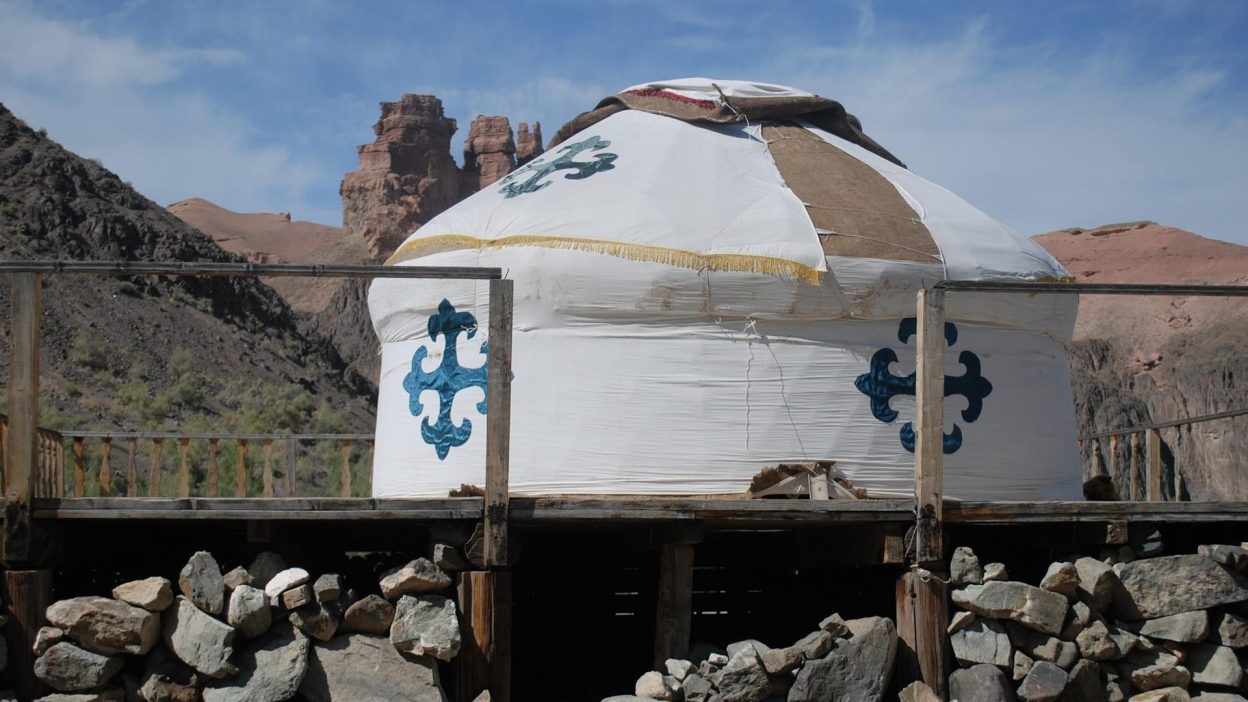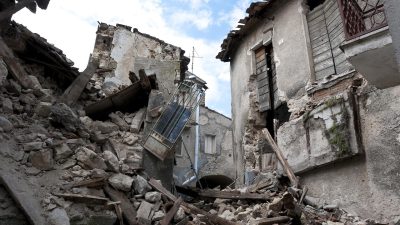When The Mongol Empire Shook To Its Core
1. Introduction: A Forgotten Catastrophe in Mongol History
The 1303 Hongdong Earthquake was one of the deadliest and most devastating natural disasters of the medieval era. Striking during the rule of the Mongol Empire, this catastrophe obliterated entire regions, leaving behind untold destruction and a death toll that rivalled some of the worst disasters in history. Despite its immense impact, this earthquake remains relatively overlooked in mainstream historical accounts. However, its repercussions were felt across China and beyond, shaking the very foundations of the empire.
The Mongol Yuan Dynasty, at the time, was already dealing with numerous administrative and military challenges. The Hongdong earthquake only worsened matters, causing widespread infrastructure damage, severe loss of life, and economic turmoil. The destruction it left in its wake was not just physical but also societal, influencing the Mongol rule in China for years to come.
2. The Mongol Empire’s Grip on China: A Precarious Reign
The Mongol Empire, under the rule of the Yuan Dynasty, was at its peak during the early 14th century. Founded by Kublai Khan, the Yuan Dynasty controlled vast territories, ruling over millions of Chinese subjects. Despite its dominance, the Mongol-led administration faced significant difficulties, including frequent rebellions, economic instability, and harsh governance policies.
The empire’s rule was marked by strict social divisions, with Mongols holding the highest ranks while native Chinese people faced systemic discrimination. The Mongols heavily taxed the local population, drained resources, and maintained their grip through military force. However, as the years passed, internal weaknesses and public dissatisfaction made their rule increasingly fragile. The 1303 earthquake acted as a catalyst that further destabilised an already crumbling empire, exposing the government’s inability to handle large-scale disasters.
3. The Devastation: Death Toll, Injuries, and Statistics
The Hongdong Earthquake of 1303 wreaked havoc on an unprecedented scale. The destruction was so vast that it left entire towns and cities in ruins, killing tens of thousands. Here’s a breakdown of the disaster’s staggering impact:
- Death Toll: Estimates suggest that nearly 200,000 people perished in the earthquake, making it one of the deadliest seismic events in recorded history.
- Injuries: Countless individuals suffered severe injuries, with many left permanently disabled due to falling debris, collapsing buildings, and ground ruptures.
- Affected Areas: The earthquake primarily struck Hongdong County, but its tremors were felt across multiple provinces, including Shanxi, Hebei, and Henan.
- Structural Damage: Thousands of homes, palaces, temples, and administrative buildings collapsed, leaving entire communities homeless.
- Economic Cost: The financial toll was immense, as trade routes were disrupted, agricultural lands were destroyed, and the Mongol administration struggled to fund relief efforts.
4. The Geological Nightmare: What Caused the Disaster?
The Hongdong Earthquake was triggered by complex geological processes deep beneath the surface. This region lies along the Shanxi Rift System, a seismically active zone prone to powerful tremors. The movement of tectonic plates, combined with accumulated stress along fault lines, likely led to the sudden and violent rupture responsible for the earthquake.
Studies indicate that seismic activity in North China has been historically high, with multiple earthquakes recorded over the centuries. The 1303 event was particularly destructive due to its high magnitude, shallow depth, and the dense population residing in the affected areas. Scientists believe that the shifting of the Eurasian Plate played a crucial role, with the resulting energy release causing catastrophic ground shaking.
5. The Immediate Aftermath: Chaos, Panic, and Mongol Governance Failure
In the immediate aftermath of the earthquake, the affected regions descended into absolute chaos. Survivors were left to fend for themselves, as the Mongol authorities struggled to respond effectively. The roads were blocked by debris, making it nearly impossible to transport aid or medical supplies. Disease outbreaks soon followed, as bodies remained buried under rubble for weeks, contaminating water sources.
The Mongol rulers, known for their strong military administration, were ill-equipped to handle a natural disaster of this magnitude. Unlike war or rebellion, an earthquake could not be crushed with an army. The local population, already resentful towards Mongol rule, saw this failure as yet another sign of their rulers’ incompetence.
6. Religious and Cultural Interpretations: A Divine Punishment?
In medieval China, natural disasters were often interpreted as signs of divine displeasure. Many saw the Hongdong Earthquake as a heavenly punishment for the Mongol rulers, believing that the Mandate of Heaven—the divine right to rule—was being withdrawn from them. Scholars, monks, and ordinary citizens alike speculated that the Yuan Dynasty had lost its legitimacy, further fuelling anti-Mongol sentiments.
Taoist and Buddhist leaders capitalised on this belief, spreading the idea that the Mongols’ rule was unnatural and doomed to fail. Some Chinese historians later linked the earthquake to the eventual fall of the Yuan Dynasty, arguing that it marked the beginning of the empire’s decline.
7. Survivors’ Accounts: Stories from the Ruins
The earthquake left behind horrifying tales of survival and tragedy. First-hand accounts recorded by Chinese historians and poets describe scenes of unimaginable destruction:
- Entire villages buried under landslides, with no survivors.
- Families torn apart as parents searched desperately for missing children in the rubble.
- Survivors enduring weeks without food, relying on tree bark and wild plants to stay alive.
- Merchants recounting how their entire wealth was lost in an instant, as their businesses were swallowed by the earth.
These haunting testimonies serve as grim reminders of the sheer scale of the tragedy.
8. Long-Term Consequences: How the Mongol Empire Was Weakened
The 1303 Hongdong Earthquake had devastating long-term effects on both the affected population and the Mongol-led Yuan Dynasty. At the time, the Mongols were already facing rising discontent from the native Chinese population, who viewed their rulers as oppressive foreign invaders. The earthquake exacerbated economic struggles, triggered mass displacement, and left the empire unable to fully recover from the damage.
One of the most significant consequences was the severe economic strain it placed on the Mongol administration. The destruction of farmland, trade centres, and infrastructure led to food shortages and declining revenues. The Yuan rulers attempted to impose higher taxes, but this only fuelled anger and rebellion. The government’s failure to provide relief and assistance further alienated the people, reinforcing anti-Mongol sentiment.
The disaster also exposed the military and administrative weaknesses of the Yuan Dynasty. Unlike previous rulers of China, the Mongols were not adept at handling large-scale natural disasters. Their focus on military dominance over governance made them ill-prepared for such a catastrophe. The earthquake was one of many events that destabilised their rule, contributing to the eventual downfall of the Yuan Dynasty in the 14th century.
9. Could Such a Disaster Happen Again?
The Shanxi region, where the 1303 Hongdong Earthquake struck, remains a high-risk seismic zone. China has experienced multiple powerful earthquakes throughout its history, and scientists believe that another large-scale seismic event is possible in the future. The Shanxi Rift System, a major fault line, continues to experience tectonic activity, meaning the ground is still shifting beneath the surface.
Although modern technology allows scientists to monitor seismic movements and issue early warnings, the risk of devastation remains high. Urbanisation has led to larger populations living in vulnerable areas, increasing the potential for damage and loss of life. Despite advancements in earthquake-resistant architecture and emergency preparedness, a major earthquake could still cause severe destruction.
With China’s growing population and economic infrastructure, it is crucial for authorities to focus on disaster preparedness, stronger building regulations, and early warning systems to mitigate the impact of future earthquakes. If a disaster of the same magnitude were to occur today, the consequences could be even more catastrophic than in 1303.
10. Conclusion: Lessons from History
The 1303 Hongdong Earthquake is a stark reminder of how unpredictable and destructive natural disasters can be. Beyond the immediate devastation, it reshaped the political and economic landscape of China, exposing the vulnerabilities of the Yuan Dynasty and accelerating its decline.
This disaster highlights the importance of preparedness and governance in managing large-scale crises. The Mongols, despite their military power, failed to respond effectively to the catastrophe, which further weakened their rule. Modern governments must learn from such historical events by investing in disaster response strategies, strengthening infrastructure, and ensuring that people are educated on earthquake safety measures.
While we cannot prevent earthquakes, we can certainly minimise their impact through scientific advancements, better urban planning, and swift emergency responses. The Hongdong Earthquake remains one of history’s deadliest disasters, serving as both a lesson and a warning for future generations.
FAQs
1. How strong was the 1303 Hongdong Earthquake?
The earthquake is estimated to have had a magnitude of 8 or higher, making it one of the most powerful recorded in Chinese history.
2. How many people died in the disaster?
Approximately 200,000 people lost their lives, making it one of the deadliest earthquakes ever recorded.
3. Did the earthquake contribute to the fall of the Mongol Empire?
Yes, it significantly weakened Mongol rule, worsening economic instability and increasing Chinese rebellions, which eventually led to the downfall of the Yuan Dynasty.
4. Is the Shanxi region still earthquake-prone?
Yes, Shanxi remains in an active seismic zone. Scientists warn that another major earthquake could occur in the future.
5. What were the religious interpretations of the disaster?
Many believed the earthquake was divine punishment, a sign that the Mongol rulers had lost the Mandate of Heaven, leading to increased anti-Mongol sentiment.




